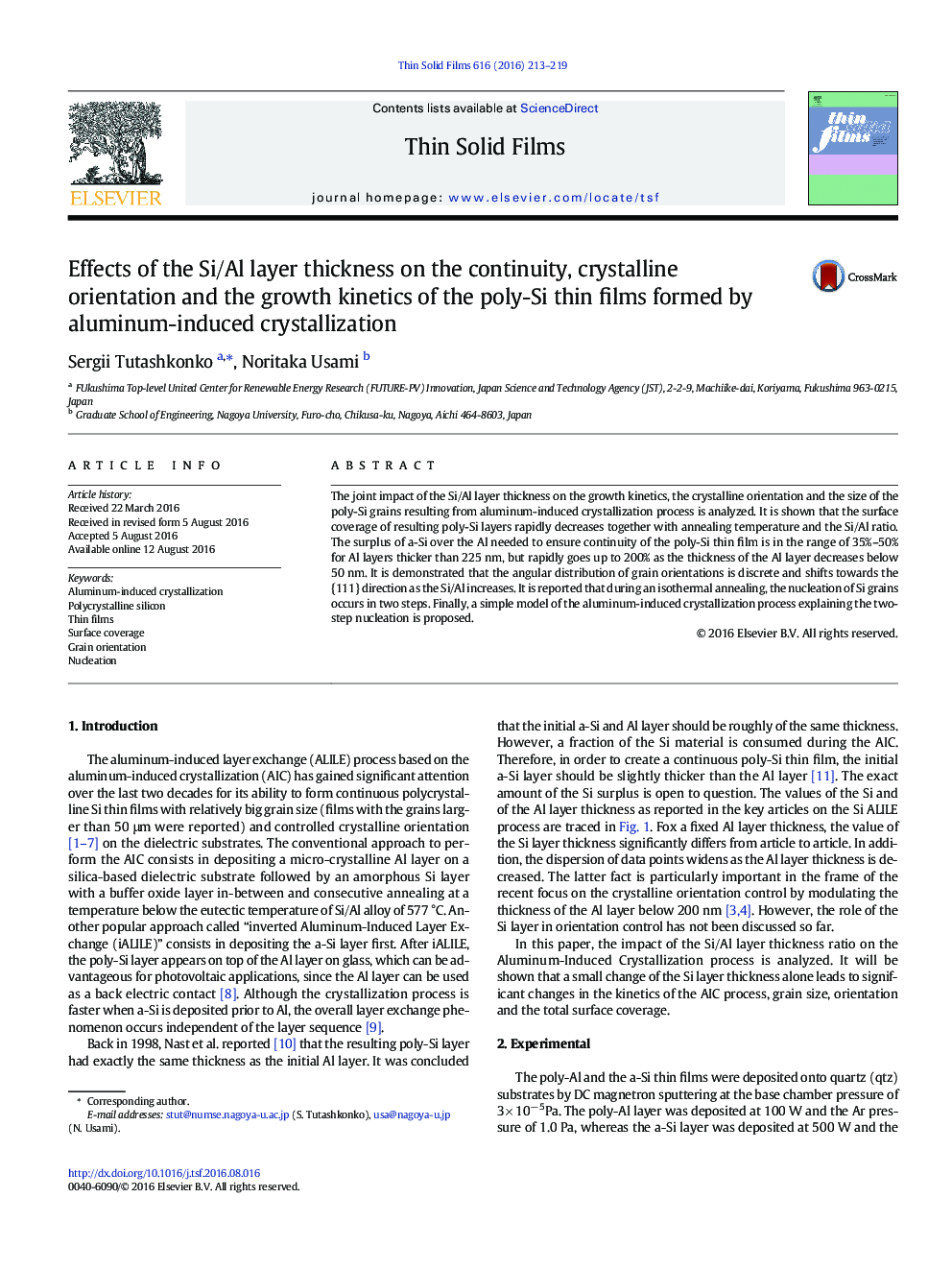| Article ID | Journal | Published Year | Pages | File Type |
|---|---|---|---|---|
| 1663732 | Thin Solid Films | 2016 | 7 Pages |
Abstract
The joint impact of the Si/Al layer thickness on the growth kinetics, the crystalline orientation and the size of the poly-Si grains resulting from aluminum-induced crystallization process is analyzed. It is shown that the surface coverage of resulting poly-Si layers rapidly decreases together with annealing temperature and the Si/Al ratio. The surplus of a-Si over the Al needed to ensure continuity of the poly-Si thin film is in the range of 35%-50% for Al layers thicker than 225Â nm, but rapidly goes up to 200% as the thickness of the Al layer decreases below 50Â nm. It is demonstrated that the angular distribution of grain orientations is discrete and shifts towards the {111} direction as the Si/Al increases. It is reported that during an isothermal annealing, the nucleation of Si grains occurs in two steps. Finally, a simple model of the aluminum-induced crystallization process explaining the two-step nucleation is proposed.
Keywords
Related Topics
Physical Sciences and Engineering
Materials Science
Nanotechnology
Authors
Sergii Tutashkonko, Noritaka Usami,
